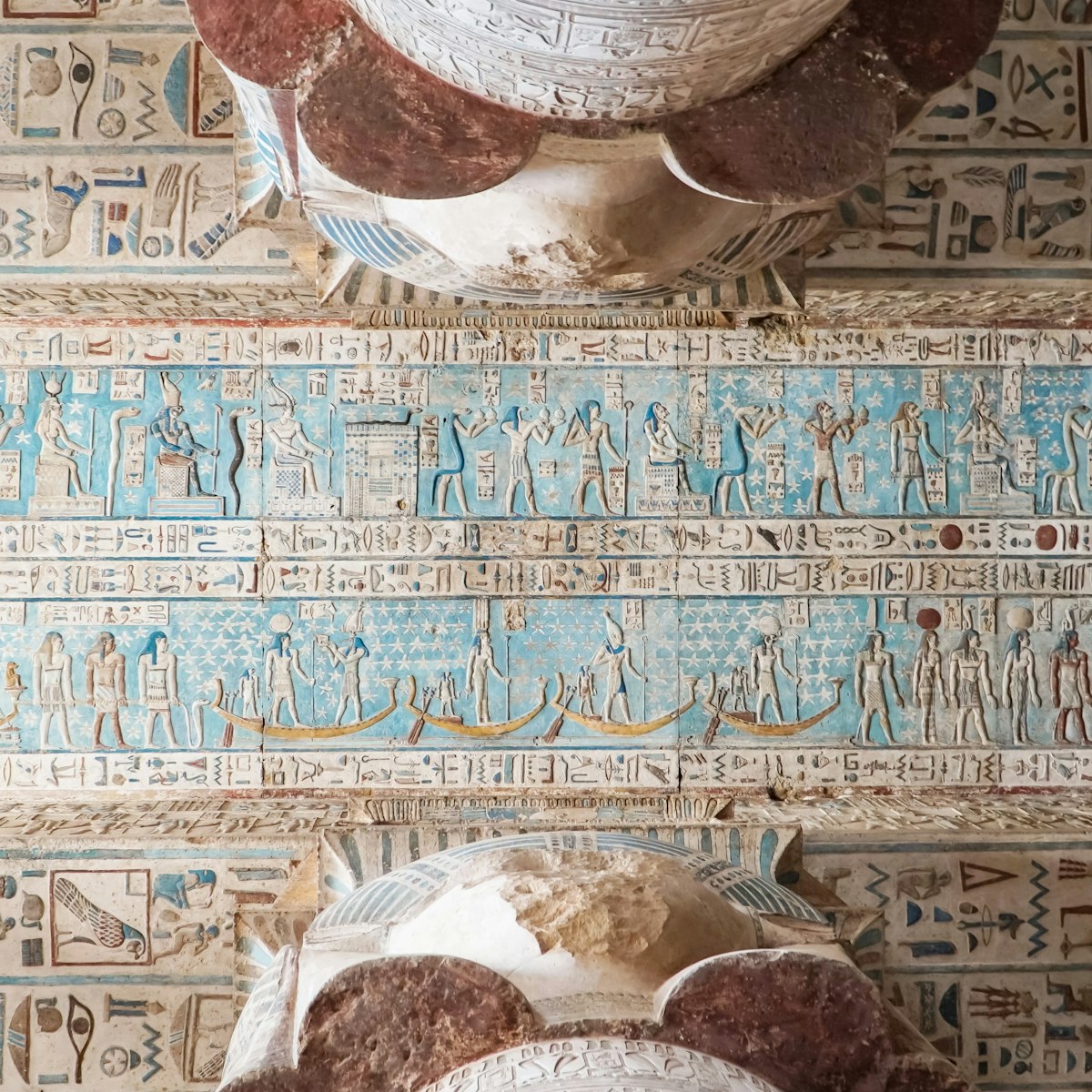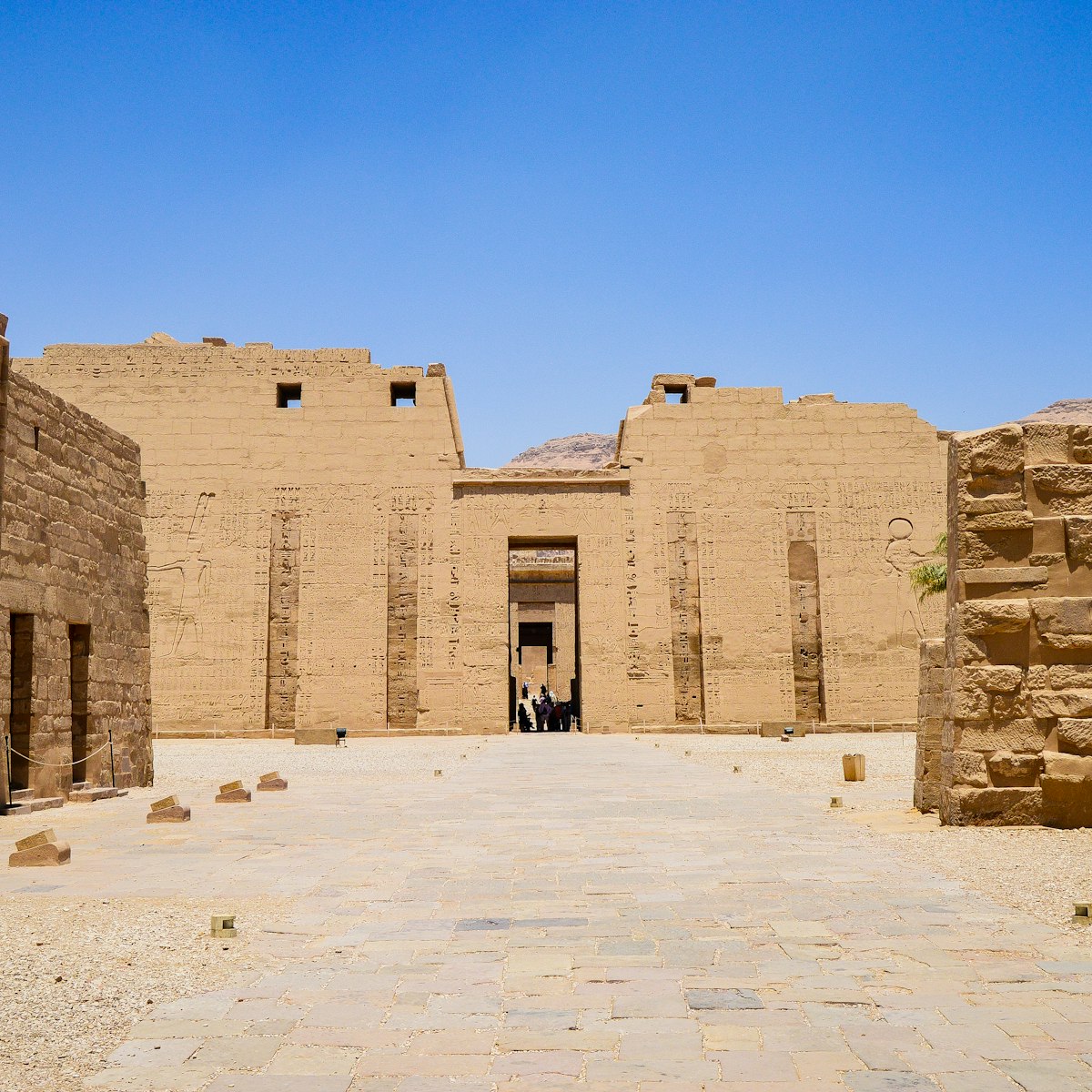Unfinished at the time of his death in 1294 BC after a two-year reign, Ramses I's simple tomb has the shortest entrance corridor; it leads to a single, almost square, burial chamber, containing the pharaoh’s open pink-granite sarcophagus. Discovered and excavated (like many others) in 1817 by the Italian adventurer Giovanni Belzoni, the quartzite sarcophagus is in place and some of the wall paintings are still fresh.
Only the chamber is superbly decorated, very similar to Horemheb’s tomb (KV 57), with extracts from the Book of Gates, as well as scenes of the pharaoh in the presence of the gods, eg the pharaoh kneeling between the jackal-headed ‘Soul of Nekhen’ and the falcon-headed ‘Soul of Pe’, symbolising Upper and Lower Egypt.







